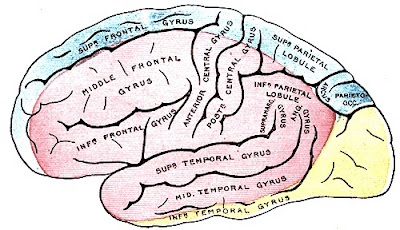 PHOTO: an animation pencil drawing and a fully inked and painted animation cel that were actually used in the days before computer animation to produce The Jetsons (TV Series 1962-1988). Both are shown placed over the registration pegs of a back-lit Oxberry animation disc that could rotate within a circular hole in a standard drawing board. The pencil drawings were traced in ink on clear cellulose, which were hand painted on the back so they could be placed over a background and photographed one frame at a time by a motion picture camera. I bought this animation disc from one of the founders of the Bajus-Jones animation studio where I was working circa 1970. (See previous posts Jetsons cel animation before computer animation (7/5/10) and Jetsons flying car in 1962 and World's Fair kitchen of the future in 2011 (3/1/11)
PHOTO: an animation pencil drawing and a fully inked and painted animation cel that were actually used in the days before computer animation to produce The Jetsons (TV Series 1962-1988). Both are shown placed over the registration pegs of a back-lit Oxberry animation disc that could rotate within a circular hole in a standard drawing board. The pencil drawings were traced in ink on clear cellulose, which were hand painted on the back so they could be placed over a background and photographed one frame at a time by a motion picture camera. I bought this animation disc from one of the founders of the Bajus-Jones animation studio where I was working circa 1970. (See previous posts Jetsons cel animation before computer animation (7/5/10) and Jetsons flying car in 1962 and World's Fair kitchen of the future in 2011 (3/1/11)
Decades ago, my mother sent me newspaper clippings concerning Peter Citron, who at the time had been an Omaha World-Herald newspaper entertainment reporter and local TV personality in Nebraska, which reported Peter Citron's criminal conviction for sexually assaulting two male children by fondling their genital areas. More recently, I stumbled across a newspaper account of a related case, which mentioned Peter Citron's conviction for pedophilia, in the story by Rick Atkinson, "Omaha's hurricane of scandal," Washington Post, Apr. 1, 1990.
I quickly sensed what my mother's real, unspoken reason was for sending me these newspaper clippings on Peter Citron's conviction for pedophilia, and so I tried to address her unspoken anxiety by truthfully saying, "Mom, I did not have sex with that man!" (Side note: Please, accept my apologies to Bill Clinton, but unlike Bill, I was actually telling the truth.)
My mother was the type of mother who never forgot anything about her son, and so when I asked her why she had sent me these newspaper clipping concerning Peter Citron, she reminded me that I had been a border in the personal residence of Peter Citron in the early 1970's when I was working as a professional motion picture film animator for the Dennis Kennedy Art Studio in Omaha, Nebraska. (See Kennedy Studios Inc. "Meet Dennis Kennedy," dkanimate.tripod.com accessed Jun. 30, 3016 and Animation by Kennedy Studios, 7427 Rogers Road, Omaha, NE 68124, manta.com accessed Jun. 30, 3016, which says, "It was established in 1972 and incorporated in Nebraska. Current estimates show this company has annual revenue of $370,000 and employs a staff of approximately 5.")
In fact, my mother did not need to remind me because having been a boarder, in the personal residence of Peter Citron, had left a big impression on me because it was the first time in my life that I was living independently, far away from my parent's home in Minnesota.
I heard about the job in Nebraska while working for the small Bajus-Jones animation studio in Minneapolis, Minnesota. (See Jeff Lenburg, "nternational Guide to Film & Television's Award-winning and Legendary Animators," Hal Leonard Corporation, 2006, p. 68)
I unknowingly become a boarder in the home of the later to be convicted pedophile and Omaha World-Herald reporter Peter Citron, after I was referred to him by Dennis Kennedy to rent one of his bedrooms. In hindsight, I now understand why Kennedy told me he had asked Peter to keep his hands off of me, which I at the time went over my head and I let it slide without questioning him what he meant.
When I first arrived at Peter Citron's home, he showed me to my assigned bedroom on the second floor of his older three-story house, which had several bedrooms rented out to young male college students who were pretty enough they could be stars in a stereotypical "twink" gay porno film.
On the third floor, above my second floor bedroom was a Victorian style attic room, complete with dormer windows, where Peter lived by himself and was later found dead after committing suicide.
All of the young male college students renting rooms in Peter's house were attending the University of Nebraska. As a fellow college student, I easily bonded with these native Nebraska boys who were the first people to introduce me to many vices, such as marijuana brownies. Marijuana brownies are now legal in Oregon and I hope that the statute of limitations has run out so I won't get prosecuted for this admission! (See University of Nebraska Omaha and University of Nebraska Lincoln)
Peter Citron similarly befriended me and invited me to come along with him, by myself, to a movie that he had been assigned by his newspaper editor to write a review for the Omaha World-Herald newspaper, which today is owned by the famous Omaha billionaire investor Warren Buffet. I was much too innocent back then to have had it occur to me that Peter was probably taking me on a gay date and hoping that I would telegraph any interest in having sex with him. If so, I am sure he was disappointed because I played it straight.
Something I didn't notice at the time, but given my more experience in the world it makes sense today, is the time I witnessed Peter bringing home a young boy to spend the night with him, and he explained it to me as being his nephew. I still don't know if this was the true story or not, but after reading about Peter's conviction for pedophilia, I can only guess about whom this boy really was and what he was doing with Peter in the bedroom upstairs.
I have never been the victim of a pedophile, and I also do not personally know anyone who has been a victim, but sadly, I believe that such people exist and I can now understand why these crimes can go undetected because of clueless people like me who are blind to it.
See the following links:
- Omaha World-Herald December of 2011 when Warren Buffett and Berkshire Hathaway purchased the paper
- Omaha World-Herald Archive 1886-Present - Omaha World-Herald Omaha.com (Buy Reprints owh.com)
- Omaha World-Herald Archive - Search for Peter Citron stories, including ones that must be purchased
- "About Nick Bryant and The Murder of Peter Citron," DavidShurter.com blog posted says, "About Nick Bryant and The Murder of Peter Citron, An Amendment ... In my book Rabbit Hole, I speak about a low level player by the name of Peter Citron, a columnist for the Omaha World Herald, who went to jail for pedophilia . . ."
- "Ex-WH Writer Peter Citron Dies - June 28, 2003 - Omaha World-Herald," franklincase.org posted Jun. 28, 2003 includes a text copy of June, 28, 2003 obituary -- see below:
Ex-WH Writer Peter Citron Dies
BY BETSIE FREEMAN - WORLD-HERALD STAFF WRITER
Former entertainment reporter Peter Citron, known for such stunts as pitching in a Little League game and posing as a high school senior, has died.
Citron, 63, had been a World-Herald columnist and reporter for WOWT-TV.
He was found dead Thursday in his home on Happy Hollow Boulevard. Acting Douglas County Coroner Tom Haynes said it appeared he had been dead for at least two days.
Haynes said an autopsy indicated Citron died of natural causes, but the exact cause may never be known.
Citron lived on the third floor of his house, and it wasn't unusual for his boarders not to see him for a few days, said his brother, John Citron of South Harwich, Mass.
The 5-foot-4 Citron had several health problems in recent years, John Citron said, and that his brother had surgery for circulation difficulties two weeks ago.
Peter Citron rew up in Scarsdale, N.Y., and studied English at Dartmouth College. He left school before getting a degree and started a weekly newspaper in his hometown, his brother said.
He came to Omaha in 1966 to work for the Omaha Sun Newspapers. He joined The World-Herald as an entertainment columnist in 1971.
His popularity grew as he engaged readers with columns describing his masquerade as a Grand Island High School student and successful attempts to get into the Guinness Book of World Records for pickle-eating and nonstop joke-telling.
He had been known for such stunts and his sense of humor since his days at Scarsdale High School, where he was elected "class pride and joy," his brother said.
Citron did entertainment reports for WOWT-TV while he was a World-Herald columnist, then left the paper in 1979 to work at the station full time. He moved to KRON-TV in San Francisco in 1981.
He returned to The World-Herald in February 1988 and resumed his column.
In February 1990, he was charged with two counts of felony sexual assault of a child - accused of fondling two young boys in separate incidents. He resigned from The World-Herald and was convicted in May 1990.
Citron was sentenced to three to eight years in prison and was paroled in January 1993.
In 1998, Citron told The World-Herald he was too ill to work and that he got by on Social Security disability, a small pension, renting rooms and donations from friends.
Citron's body was cremated, and a private memorial service was planned. Other survivors include his mother, Ruth Citron of Chatham, Mass.
(Quoted from Paid Obituary, ","Omaha World-Herald , June 29, 2003, Page: 4b)






